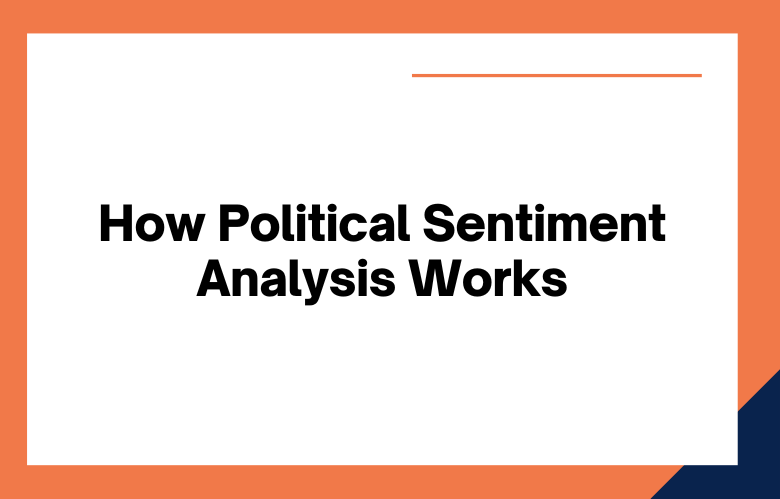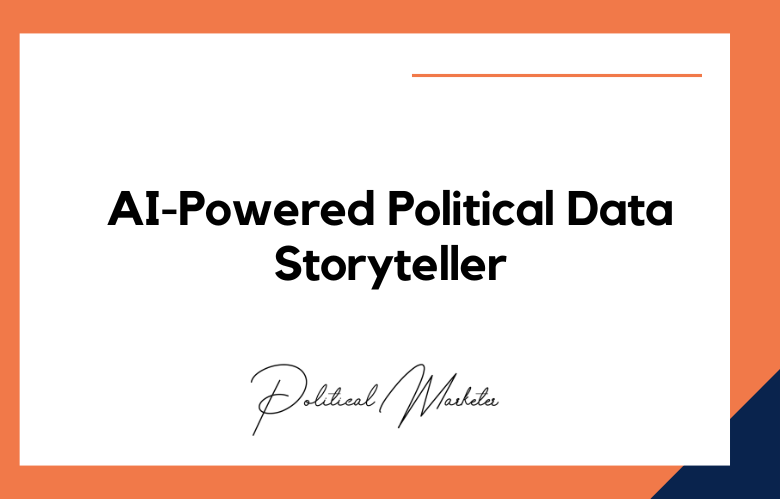Political sentiment analysis uses big data and machine learning to identify, measure, and track public opinion.
It can be used to understand the general mood around a political topic or to provide insights into how people feel about certain politicians or policies.
I will have a closer look at how political sentiment analysis works.
A Closer Look at Political Sentiment Analysis
What is Political Sentiment Analysis?
Political sentiment analysis analyzes public sentiment toward a particular political topic or figure.
It involves collecting data from sources such as news articles, social media posts, and other digital sources and then analyzing that data to determine the overall sentiment of individuals or groups.
This analysis aims to provide insight into public opinion on political issues or candidates without relying solely on poll results or surveys.
How does Political Sentiment Analysis work?
The most common way to perform political sentiment analysis is through natural language processing (NLP).
NLP is an artificial intelligence (AI) that enables computers to “understand” language by identifying patterns and relationships between words and phrases.
By leveraging NLP techniques, analysts can quickly identify relevant topics in large volumes of text-based data and determine whether those topics are being discussed positively or negatively.
In addition to NLP algorithms, many organizations also employ machine learning (ML) models to understand better how people feel about specific topics or politicians.
ML models use labeled training data—datasets that have already been “tagged” with positive or negative sentiments—to “learn” which words tend to indicate positive or negative views about particular topics.
Once trained, these models can automatically detect emotion in new datasets without requiring manual tagging.
Political sentiment analysis involves analyzing and interpreting large amounts of data from different sources, such as news articles, social media posts, surveys, polls, and more.
Using natural language processing (NLP) algorithms, the data is broken down into individual words that are then assigned a numerical value based on whether they are seen as positive or negative.
For example, if a comment like “taxes” is seen as unfavorable in the context of a sentence, it will be given a low score; however, if the word “strong” is seen as positive, it will be given a high positive score.
The data collected by sentiment analysis tools can create visualizations and reports that give an overview of public opinion on any topic.
This information can then inform decisions or strategies related to politics or policymaking.
It can provide valuable insights into what people think about specific topics or issues, which can help politicians better connect with their constituents.
Understanding Political Sentiment Analysis
It’s no secret that politics can be divisive. With the rise of social media, it’s become more accessible to express and share political views online.
But how do we measure public opinion on a given issue? That’s where political sentiment analysis comes in.
This powerful technology lets us track and analyze public opinion on various topics in real-time. Let’s examine it in more detail.
An Overview of Political Sentiment
Political sentiment analysis is a powerful tool for studying public opinion on political topics.
It involves analyzing data from tweets, news articles, and surveys to identify trends and understand how people feel about political issues.
We’ll take a look at what precisely political sentiment analysis is and how it works.
The benefits of Political Sentiment Analysis
Political sentiment analysis provides many benefits for both businesses and individuals alike.
For businesses, it can help them gain insights into customer opinions and trends, which can help them better target their marketing efforts.
Similarly, political candidates can use sentiment analysis to uncover what people think about them and their campaigns, which can help them craft more effective messaging strategies.
On an individual level, sentiment analysis allows people to keep up with current events engagingly since it provides real-time updates on public opinion on specific topics or issues.
Understanding Public Opinion with Text Analysis
Political sentiment analysis utilizes techniques to analyze large amounts of text data to understand public opinion.
This process involves studying the words used in a text and its overall tone.
For example, a tweet containing negative words like “disgraceful” or “appalling” would likely be classified as having a negative sentiment toward the topic being discussed.
Similarly, a news article containing words like “proud” or “hopeful” would likely be classified as having a positive sentiment toward the discussed topic.
Using Machine Learning Algorithms
Machine learning algorithms are often used to automate the process of accurately analyzing text data for sentiment analysis.
These algorithms are trained using labeled training data—texts manually tagged according to their sentiments—and use this training data to classify new texts according to their opinions.
The accuracy of these algorithms depends on the quality of the labeled training data they were trained with; if there are errors in the labeling process, these errors will be reflected in the algorithm’s output.
Combining Structured Data with Unstructured Data
In addition to analyzing unstructured textual data sources like tweets and news articles for political sentiment analysis purposes, structured data sources such as polls and surveys can also be used.
By combining structured and unstructured data sources, researchers can gain valuable insights into public opinion on political issues that would otherwise be difficult or impossible to obtain through either method alone.
Data Collection
The first step in political sentiment analysis is collecting data. This data can come from social media posts, news outlets, blogs, and websites.
For example, suppose you are trying to track public sentiment about a particular candidate for office or an issue being debated in Congress.
In that case, you need to collect data from sources related to those topics. The more accurate your data collection process is, the more reliable your results will be.
Data Analysis
Once the data has been collected, it must be analyzed to understand public opinion.
To do this, algorithms analyze text-based data for patterns that indicate positive or negative sentiments about the studied issue.
Algorithms are also used to identify keywords and phrases associated with positive or negative opinions on the subject matter.
Organizations can then use the analysis results to understand public opinion better and tailor their messaging accordingly.
Data Visualization
Once the analysis is completed, it is essential to present the results in a method that is easy for others to understand.
Data visualization tools like charts and graphs can make complex data sets easier to digest by providing an overview of the most critical findings in an easy-to-read format.
This makes it easier for decision-makers within organizations to get a quick snapshot of what people say online about a particular topic without reading hundreds or thousands of individual posts or articles.
Conclusion
In conclusion, political sentiment analysis is an invaluable tool for understanding public opinion, informing decisions related to politics and policymaking, and providing valuable insights into how people feel about specific topics or issues.
Leveraging big data and machine learning technologies allows us to quickly analyze vast amounts of data to uncover trends in public opinion that would otherwise be impossible without such technology.
With its many benefits for businesses and individuals alike, political sentiment analysis will undoubtedly continue to play an essential role in politics for years to come.
Call: +91 9848321284
Email: [email protected]











